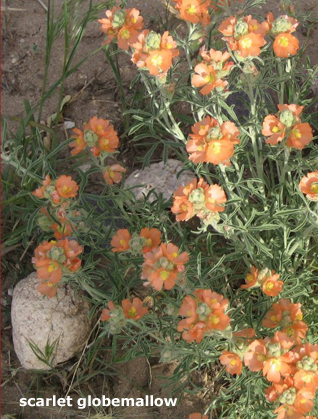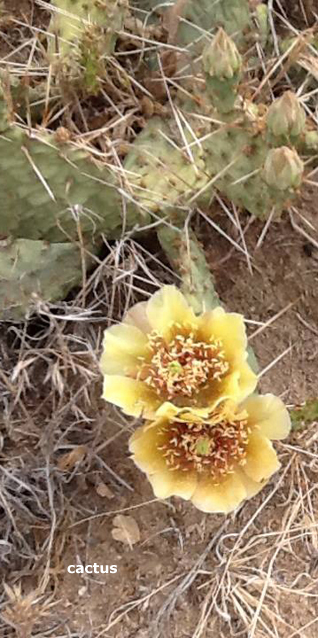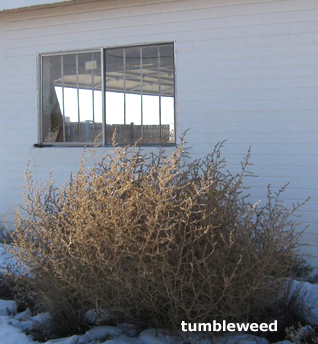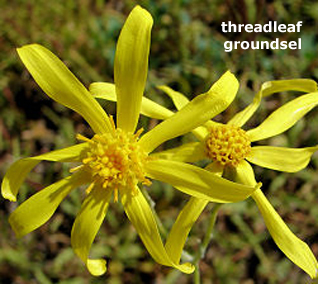Columnists
Listening To The Land: Part II -
Letters From Espanola
EK ONG KAAR KAUR
The first years that I lived in my home, I had no idea what to do.
Why on earth the Guru had brought me to a place with so much land was beyond my comprehension. I felt completely bewildered looking at it all.
The first few years, I tried to keep alive the trees and plants that had come with the property, even though they were water hungry. Water hungry plants do well in climates with lots of rain - which is not New Mexico.
But it is funny. Mother Nature has her own rhythm and is perfectly capable of decorating herself. While I focused on watering trees that began to die anyway, Mother did what she wanted.
First came the tumbleweeds. Lots of them. Tumbleweeds that would be as tall as I am, as they lay on their side. Tumbleweeds big enough to serve as shelter for birds in the dead of winter.
Yet, over time I realized that tumbleweeds had a wisdom of their own. Where there was nothing, just bare ground exposed to the elements, a tumbleweed was like a big stop sign. It kept people and animals from trampling on the ground. It gave the earth some breathing space.
After a couple years, those bare patches that once housed tumbleweeds began to sprout natural grasses. Especially Indian rice grass. Indian rice grass grew without any additional water. Just made itself right at home in the climate, asking for nothing.
I did some research and discovered that the First Nations ate it as a grain, and so did the first pioneers. The more the Indian rice grass grew, the fewer tumbleweeds appeared. Of course, you can never get rid of tumbleweeds all together in New Mexico.
But the land was clearly renewing itself.
Some seasons into this process, I began to see flowers show up with the grasses. Bright orange flowers with grey-green leaves called Scarlet Globemallow. Or huge bushes of tiny yellow daisy-like flowers, with an incredible fragrance that the honey bees loved, called Threadleaf Groundsel. Or the most delicate red flowers that never grew more than a few inches tall, called Scarlet Bee Blossom.
Mother Nature brought it all. And everything grew and prospered just fine, without one additional drop of water from me. I looked at the grasses and the flowers, and looked at the trees I could not manage to keep alive with my watering, and decided -- maybe the earth is trying to tell me something.
So, I changed my strategy. I began to let most of the plants that needed lots of water die. And I found a nursery that specialized in native plants, instead. Plants that, once established, would not need extra water and could survive in New Mexico's climate.
The first time I purchased a native plant, I came home, got a shovel, dug a hole, added some compost, and put the plant in the ground. Surprisingly, while I was doing this, an itty bitty little rain cloud, in an a otherwise fairly clear sky, came floating over my yard and began to rain right above me. Right on me and the patch of land where I was planting the shrub.
There were no other clouds, and no other rain in the sky. Just this lone rain cloud that stopped to pay a visit.
We all know from ancient cultures the stories about nature spirits. Devis, I believe they are called in the East. Fairies in the West. Today we scoff at these ideas and call them superstitious.
But when I looked at that rain cloud, I could visualize the outline of a woman, sitting with one leg dangling. While I studied the human like form within this singular cloud raining above, a gust of wind sprung up from nowhere. And what did it do? It aimed right for one of those trees I was struggling to keep alive and blew it completely over.
One little cloud. One serious gust of wind. And then the cloud moved on.
Nature has an intelligence of Its own. We think we are above it, or we think we are greater than it. But the fact is, we were born of that intelligence. That intelligence can speak to us in so many ways if we listen. Was there a consciousness within the cloud, itself? Was it just a random act of rain, and a gust of wind? I am not going to make any claims. But to me it felt like some kind of communication from Mother Nature saying, "I approve of this new plant you are adding. And please, let us get rid of these other trees. They do not belong here."
I know a lot of the columns I write I try to talk about my experiences with people, or give some insights about my experience of the human spirit. And perhaps these ramblings about gardening seem too mundane. But I feel it is so important to pay attention. To pay attention to these natural cycles which surround us and which give us life. That existed before we arrived and will continue after our bodies turn to ash.
These cycles have so much intrinsic wisdom, if we can learn to open ourselves to them. To be patient. To watch. To extend our senses. We loose that in this age of machines and the Internet, and the endless stream of communication which pull on our fantasies or indulge our fears.
We lose the pulse of the seasons and how this whole biosphere is a self-sustaining consciousness that will nurture us if we just learn to flow with it. To be in harmony with it. To be at peace with it.
It took five years of watching the land to learn these few things. And for the last four years, I have continued to let some old trees die, and to do my best to establish those plants that can live in harmony with the climate. If you ever came here, the garden would not look like much. I mostly let the native grasses and wildflowers take over. And even though I have planted some 60 odd shrubs and flowers, it is like a drop in the bucket compared to how much space there is.
But every season, I learn something new. I get a little better at this game of harmonizing myself with the cycles around me. Every year, Mother Nature brings what she wants. If I like it, I keep it. If I do not, I get rid of it. And every year, I add some plants of my own.
And of course, what Mother likes, she keeps. And what she does not like, she gets rid of.
To the untrained eye it might look like a mess. But to me, it looks like life. Every blade of grass is precious to me.
It keeps me humble and reminds me that I am just a temporary guest on this amazing living planet that never needed me, but that I have the privilege to enjoy, anyway.
May 9, 2014
Conversation about this article
1: M K S (New York City, USA), May 09, 2014, 10:03 AM.
Ek Ong Kaar ji: As with your other articles, the reader simply nods his head in agreement. You're blessed that you've tuned yourself to mother nature's channel. I have been to Espanola twice and agree with the emptiness / openness of the place, especially when compared to the density that I'm accustomed to in New York. There was an elderly gentleman in Ramdaspuri who maintained a wonderful garden named after US presidents, is that still functional? Keep the 'Letters From Espanola' coming. Thank you. P.S. The one thing I don't like about New Mexico: the rattle snakes. :)
2: Avtar Singh (Delhi, India), May 10, 2014, 4:16 AM.
Just came across the following lines, very much in sync with your article. "Spirituality encompasses our aesthetic faculties too. It is truly said: 'looking is a gift and seeing is a power' (Gross & Shapiro, 2001). "Stop in the woods and listen / the sound of the wind / the trees / the leaves / Savor the silence of mossy rocks / Discern a voice in your being / emptied of mind's loud chatter. / Hear it speaking a different wisdom, / a wisdom beyond wisdom, Taste it and you will know." [BCJ]






